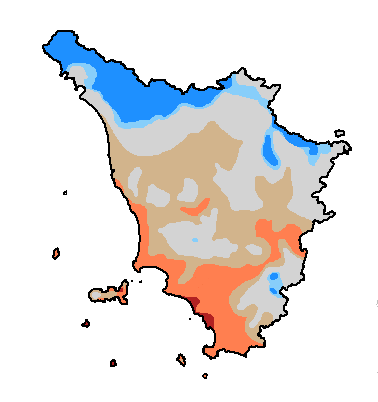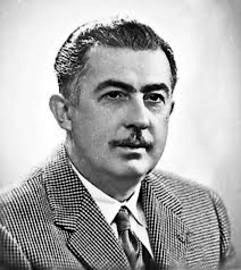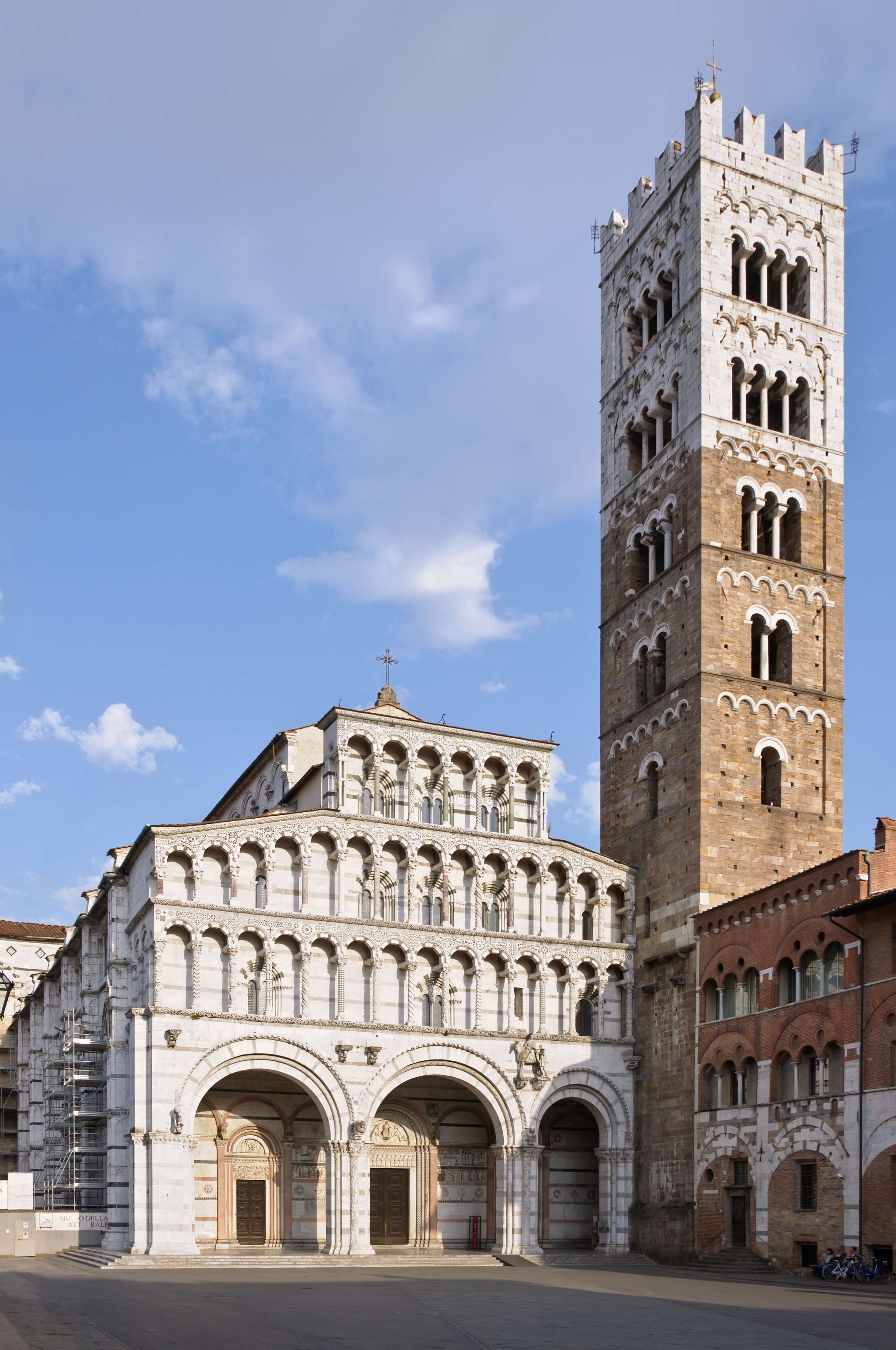|
Appiani Family
The Appiani family (also Appiano or d'Appiano) was an Italian nobility, Italian noble family, originally from Al Piano or Appiano, a now disappeared toponym identified with the modern La Pieve in the ''comune'' of Ponsacco, Tuscany. They held the principality of Piombino from the early 15th century until 1628. History The family originated in the region of Appiano val d'Era, in the present day province of Pisa. The first known member is one Guarnito d'Appiano, a notary who lived between 1200 and 1255; his son Jacopo (flourished at Pisa c. 1230-1290) was also a notary, as well as his grandson Benvenuto, who became chief of the Pisane Corporation of Notaries. His grand-grandson Vanni, also a notary, became an Anziano ("Elder", meaning consul) of Pisa and then Chancellor of the Senate of Lucca in 1347, before he was beheaded at Pisa in May 1355. His son Jacopo (c. 1322 - 1398) became Chancellor of the Republic of Pisa and head of the political party of the Raspanti, associated with ... [...More Info...] [...Related Items...] OR: [Wikipedia] [Google] [Baidu] |
Bandiera Appiani
Bandiera is an Italian language, Italian surname, meaning flag. Notable people with the name include: * Bandiera brothers (died 1844), Italian nationalists during the Risorgimento * Benedetto Bandiera (c. 1560–1634), Italian painter of the early-Baroque period * Bobby Bandiera (born 1953), American rock guitarist, singer and songwriter * Dario Bandiera (born 1970), Italian actor and comedian * Dean Bandiera (1926–2020), Canadian football player * Irma Bandiera (1915–1944) Italian resistance member * Marco Bandiera (born 1984), Italian road bicycle racer * Neri Bandiera (born 1989), Argentine football forward * Oriana Bandiera (born 1971), Italian economist and academic See also * Bandera (other) {{surname Italian-language surnames ... [...More Info...] [...Related Items...] OR: [Wikipedia] [Google] [Baidu] |
Tuscany
Tuscany ( ; ) is a Regions of Italy, region in central Italy with an area of about and a population of 3,660,834 inhabitants as of 2025. The capital city is Florence. Tuscany is known for its landscapes, history, artistic legacy, and its influence on high culture. It is regarded as the birthplace of the Italian Renaissance and of the foundations of the Italian language. The prestige established by the Tuscan dialect's use in literature by Dante Alighieri, Petrarch, Giovanni Boccaccio, Niccolò Machiavelli and Francesco Guicciardini led to its subsequent elaboration as the language of culture throughout Italy. It has been home to many figures influential in the history of art and science, and contains well-known museums such as the Uffizi and the Palazzo Pitti. Tuscany is also known for its wines, including Chianti, Vino Nobile di Montepulciano, Morellino di Scansano, Brunello di Montalcino and white Vernaccia di San Gimignano. Having a strong linguistic and cultural identity, ... [...More Info...] [...Related Items...] OR: [Wikipedia] [Google] [Baidu] |
Paola Colonna
Paola Colonna (c. 1378 – 3 November 1450) was the lady of Piombino from 1441 until 1445. She was born in Genazzano as the daughter of Agapito Colonna, Lord of Genazzano, Capranica Prenestina, San Vito and Ciciliano from 1374, who died after 23 May 1398, and wife Caterina Conti. Her brother Giordano, Lord of Genazzano, Capranica Prenestina, San Vito and Ciciliano, a Neapolitan General, Patrician of Naples in 1417, was shortly Prince of Salerno and Duke of Venosa from 3 August 1419, dying of plague on 16 August 1422, having married Mascia Annibaldi, who died in 1423, without issue, while her brother Oddone would become Pope Martin V. On 18 June 1396 in Rome, she was married to Gherardo Appiani, Lord of Piombino. At his death, she held the regency for their son Iacopo. When the latter also died, she left the principate, against the legitimate heir Emanuele Appiani, to her daughter Caterina, married to the condottiero Rinaldo Orsini. She died in Piombino in 1450. See also ... [...More Info...] [...Related Items...] OR: [Wikipedia] [Google] [Baidu] |
Iacopo II Appiani
Iacopo II Appiani (c. 1400 – 27 December 1441) was the lord of Piombino from 1411 until 1427.Mauro Carrara, Signori e principi di Piombino, Bandecchi & Vivaldi, Pontedera 1996. He was born in Piombino, the son of Gherardo Appiano, whom he succeeded in 1411, remaining under the regency of his mother Paola Colonna until coming of age. He is described as a cruel man, switching abruptly his alliances from the Republic of Florence The Republic of Florence (; Old Italian: ), known officially as the Florentine Republic, was a medieval and early modern state that was centered on the Italian city of Florence in Tuscany, Italy. The republic originated in 1115, when the Flor ... to that of Siena, and then moving again to the former. He strengthened his position by marrying Donella Fieschi, daughter of the powerful Genoese patrician and Florentine commander Gian Luigi Fieschi. Iacopo died childless in 1427, perhaps poisoned, and was succeeded by his mother. References { ... [...More Info...] [...Related Items...] OR: [Wikipedia] [Google] [Baidu] |
Vignale
Vignale is the luxury car sub-brand of Ford Motor Company used in automobiles sold in Europe.Ford Vignale: The history behind Vignale, Ford's new luxury division on Auto Express, 28 Mar 2016 The former company Carrozzeria Alfredo Vignale was an Italian established in 1948 at Via Cigliano, , by Alfredo Vignale (1913 ... [...More Info...] [...Related Items...] OR: [Wikipedia] [Google] [Baidu] |
Florence
Florence ( ; ) is the capital city of the Italy, Italian region of Tuscany. It is also the most populated city in Tuscany, with 362,353 inhabitants, and 989,460 in Metropolitan City of Florence, its metropolitan province as of 2025. Florence was a centre of Middle Ages, medieval European trade and finance and one of the wealthiest cities of that era. It is considered by many academics to have been the birthplace of the Renaissance, becoming a major artistic, cultural, commercial, political, economic and financial center. During this time, Florence rose to a position of enormous influence in Italy, Europe, and beyond. Its turbulent political history includes periods of rule by the powerful House of Medici, Medici family and numerous religious and republican revolutions. From 1865 to 1871 the city served as the capital of the Kingdom of Italy. The Florentine dialect forms the base of Italian language, standard Italian and it became the language of culture throughout Italy due to ... [...More Info...] [...Related Items...] OR: [Wikipedia] [Google] [Baidu] |
Duchy Of Milan
The Duchy of Milan (; ) was a state in Northern Italy, created in 1395 by Gian Galeazzo Visconti, then the lord of Milan, and a member of the important Visconti of Milan, Visconti family, which had been ruling the city since 1277. At that time, it included twenty-six towns and the wide rural area of the middle Padan Plain east of the Montferrat, hills of Montferrat. During much of its existence, it was wedged between House of Savoy, Savoy to the west, Republic of Venice to the east, the Old Swiss Confederacy, Swiss Confederacy to the north, and separated from the Mediterranean by the Republic of Genoa to the south. The duchy was at its largest at the beginning of the 15th century, at which time it included almost all of what is now Lombardy and parts of what are now Piedmont, Veneto, Tuscany, and Emilia-Romagna. Under the House of Sforza, Milan experienced a period of great prosperity with the introduction of the silk industry, becoming one of the wealthiest states during the Ren ... [...More Info...] [...Related Items...] OR: [Wikipedia] [Google] [Baidu] |
Gian Galeazzo Visconti
Gian Galeazzo Visconti (16 October 1351 – 3 September 1402), was the first duke of Duchy of Milan, Milan (1395) and ruled that late-medieval city just before the dawn of the Renaissance. He also ruled Lombardy jointly with his uncle Bernabò Visconti, Bernabò. He was the founding patron of the Certosa di Pavia, completing the Visconti Castle (Pavia), Visconti Castle at Pavia begun by his Galeazzo II Visconti, father and furthering work on the Duomo of Milan. He captured a large territory of northern Italy and the Po valley. He threatened war with France in relation to the transfer of Genoa to French control as well as issues with his beloved daughter Valentina Visconti, Duchess of Orléans, Valentina. When he died of fever in the Castello of Melegnano, his children fought with each other and fragmented the territories that he had ruled. Biography During his patronage of the Visconti Castle, he contributed to the growth of the collection of scientific treatises and richly ill ... [...More Info...] [...Related Items...] OR: [Wikipedia] [Google] [Baidu] |
Gherardo Appiani
Gherardo Appiani (c. 1370 – May 1405) was the lord of Piombino from 1398 until his death.Mauro Carrara, Signori e principi di Piombino, Bandecchi & Vivaldi, Pontedera 1996. He was a member of the Appiani family. He was born in Pisa, the son of Iacopo I Appiani. He was lord of that city from 1398 until 1399, obtaining the lordship of Piombino in 1398 in exchange for Pisa, sold to Gian Galeazzo Visconti for 200,000 florins. In 1396 he married Paola Colonna, daughter of Agapito Colonna, and sister of future Pope Martin V. He died in 1405, succeeded in Piombino by his son Iacopo Iacopo is a given name, form of Jacopo, an Italian variation of Giacomo. May also refer to: *Iacopo II Appiani (1400–1441), the lord of Piombino from 1405 until 1441 *Iacopo III Appiani (1422–1474), Prince of Piombino of the Appiani dynasty in .... References {{DEFAULTSORT:Appiani, Gherardo 1370s births 1405 deaths Gherardo People from Pisa Lords of Piombino ... [...More Info...] [...Related Items...] OR: [Wikipedia] [Google] [Baidu] |
Della Gherardesca
The House of Gherardesca was an ancient Italian noble family of the Republic of Pisa, of Longobard origin. The family likely dates back as early as the 11th century. They were one of the most prominent families initially in Pisa, then of Volterra and eventually of Florence. They were of Ghibelline sympathies and held the county of Donoratico. History Constantine I of Gallura may have been a member of the family, ruling Gallura on behalf of the Archdiocese of Pisa. The Gherardeschi had a rivalry with the House of Visconti, another Ghibelline family of Pisa. In 1237, the Archbishop and the Emperor Frederick II intervened in Pisa to reconcile the two rivals, but failed. In 1254, the citizenry rebelled and imposed twelve ''Anziani del Popolo'' ("Elders of the People") as their political representatives. Early on in the century, the Gherardeschi took an interest in the affairs of Pisa in Sardinia. In 1230, Ubaldo of Gallura, a Visconti, invaded the Giudicato of Cagliari, bu ... [...More Info...] [...Related Items...] OR: [Wikipedia] [Google] [Baidu] |
Republic Of Pisa
The Republic of Pisa () was an independent state existing from the 11th to the 15th century centered on the Tuscan city of Pisa. It rose to become an economic powerhouse, a commercial center whose merchants dominated Mediterranean and Italian trade for a century, before being surpassed and superseded by the Republic of Genoa. The republic's participation in the Crusades secured valuable commercial positions for Pisan traders, leading to increased wealth and power. Pisa was a historical rival to Genoa at sea and to Florence and Lucca on land. It lost its independence to Florence in 1406. The power of Pisa as a mighty maritime nation began to grow and reached its apex in the 11th century when it acquired traditional fame as one of the main historical maritime republics of Italy. Rise to power During the High Middle Ages the city grew into a very important commercial and naval center and controlled a significant Mediterranean merchant fleet and navy. It expanded its influence ... [...More Info...] [...Related Items...] OR: [Wikipedia] [Google] [Baidu] |
Lucca
Città di Lucca ( ; ) is a city and ''comune'' in Tuscany, Central Italy, on the Serchio River, in a fertile plain near the Ligurian Sea. The city has a population of about 89,000, while its Province of Lucca, province has a population of 383,957. Lucca is known as an Italian "Città d'arte" (City of Art) from its intact Renaissance-era Walls of Lucca, city walls and its very well preserved historic center, where, among other buildings and monuments, are located the Piazza dell'Anfiteatro, which has its origins in the second half of the 1st century A.D., the Guinigi Tower, a tower that dates from the 14th century and the Cathedral of San Martino. The city is the birthplace of numerous world-class composers, including Giacomo Puccini, Alfredo Catalani, and Luigi Boccherini. Toponymy To the Ancient Rome, Ancient Romans, Lucca was known as ''Luca''. From more recent and concrete toponymic studies, the name Lucca has references that lead to "sacred grove" (Latin: ''lucus''), " ... [...More Info...] [...Related Items...] OR: [Wikipedia] [Google] [Baidu] |





